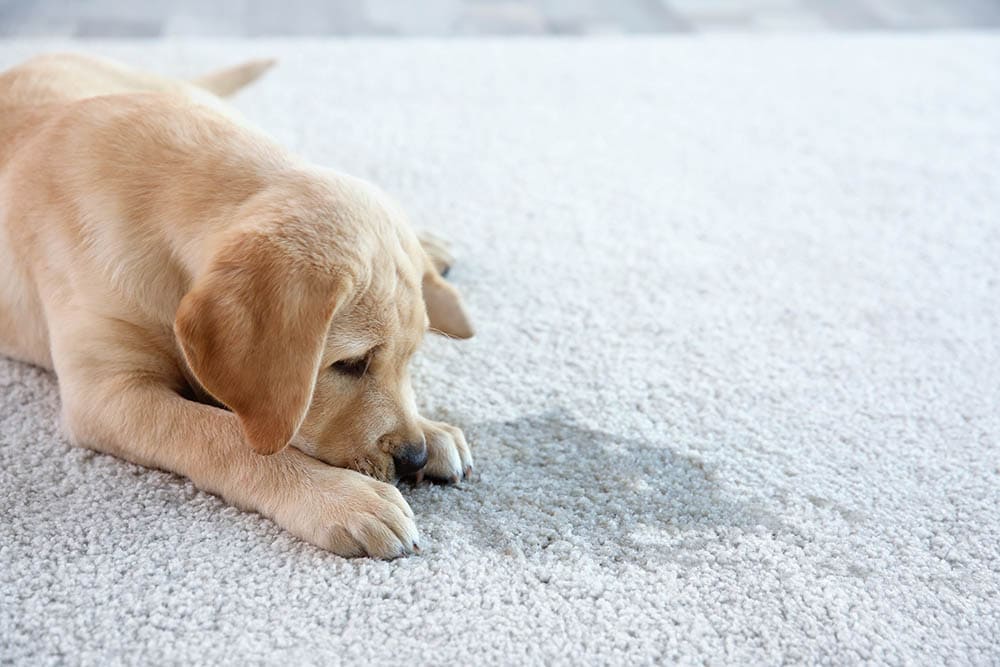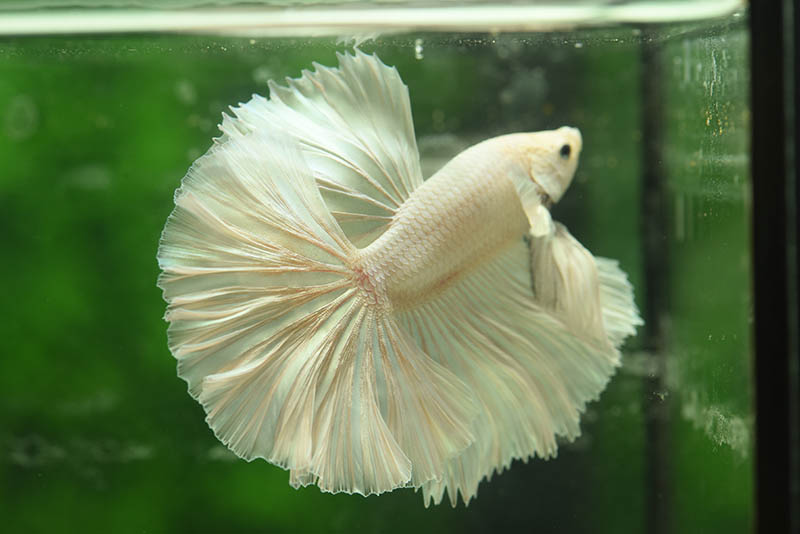My Dog Ate a Sock: Our Vet Explains What to Do
By Dr. Kim Podlecki, DVM (Vet)
Updated on
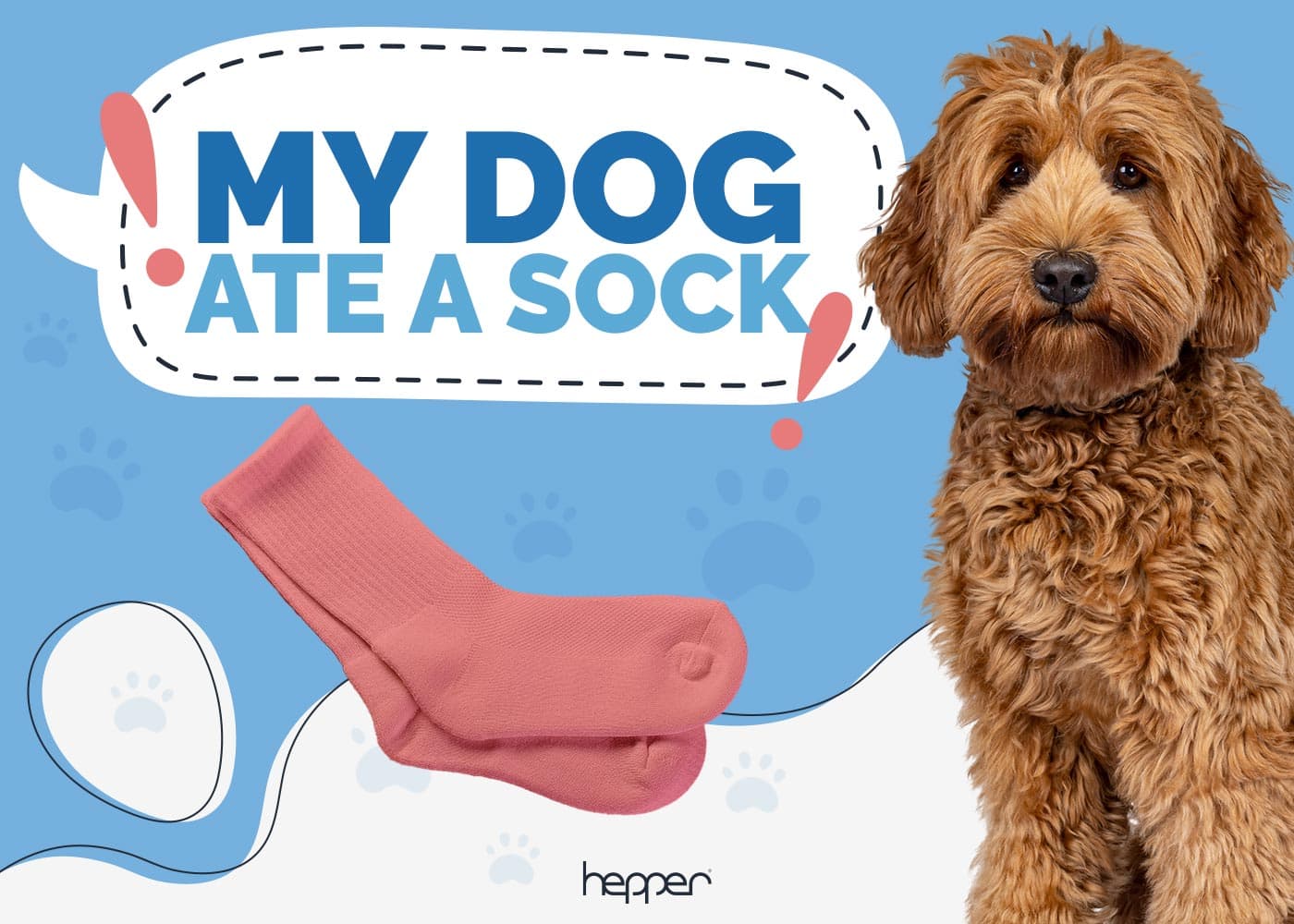
A sock may seem like a strange thing to eat. But there are dogs out there that love to play with them, and others that love to eat them. Some dogs may like to play with them and tear them up because they remind them of their toys. Other times dogs will swallow anything, even if not on purpose. But what should you do if your dog ate a sock? Should you be concerned? In this article we’ll discuss what to do if you know your dog ate a sock, and what to look for if you aren’t sure.
Caught Red Handed
If you catch your dog red handed, eating and/or swallowing a sock or a pair of socks, don’t panic. The last thing you want to do is freak out and try to reach into your dog’s mouth to retrieve it. Which brings us to another point – do not try to “gag” your dog to make them vomit. Not only does this not work, but it’s dangerous as your dog may seriously bite you. If you saw your dog eat a sock, make sure to pick up any others and/or toys that they may get into.
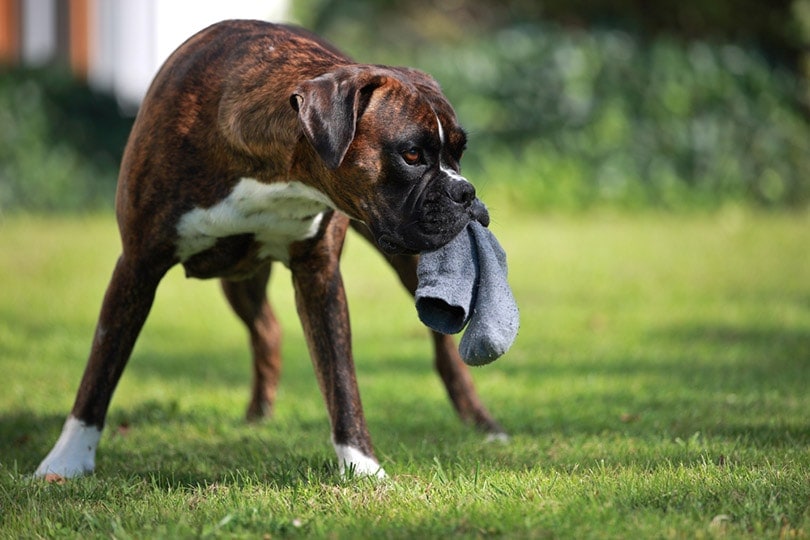
Do Not Feed Your Dog
Another common myth is that you can force your dog to eat and potentially make them vomit up the sock. We do not recommend force feeding or feeding your dog after they have ingested a sock. The reason for this is that it may make sock retrieval more difficult. The best thing is to put up the food and water bowls while you make a plan on what to do.
Call Your Veterinarian
The good news is that if you catch your dog eating the sock, and/or know it’s only been an hour or two since the event, the sock can often be retrieved by emesis. Emesis is the act of vomiting. Your veterinarian likely has a medication that they can give as an injection to your dog that will cause them to vomit. If the sock is still within the stomach, then oftentimes your dog will immediately vomit the sock (and any other stomach contents) up. If your regular veterinarian does not have this medication, and/or they are closed, the local Urgent Care or Veterinary ER should have the medication. This is a veterinary-only product and can NOT be purchased online or at a store.

Ask Your Veterinarian About Hydrogen Peroxide
If you are unable to get your dog to the veterinarian, or perhaps you are a few hours away from the nearest ER, your veterinarian may recommend you give hydrogen peroxide. This can sometimes cause vomiting. We always recommend speaking with your veterinarian first as giving this is not without risks. Giving hydrogen peroxide may put your dog at risk for developing both stomach and esophageal ulcers. Both can be painful and cause vomiting, regurgitation, pain, and anorexia. However, if there are no other options, it may be worth a try. Your veterinarian can give you a safe dose over the phone based on the last weight of your dog.
Do Not Give Any OTC Medications
Whatever you do, do not give any type of oils, salts, charcoal, or other products to try and make your dog vomit and/or push the sock through the intestinal tract. These can be extremely harmful and even fatal to your dog. If your doctor recommends you give hydrogen peroxide, follow their exact instructions. However, the safest thing is to have your dog seen by a veterinarian so they can give the injectable medication for vomiting.
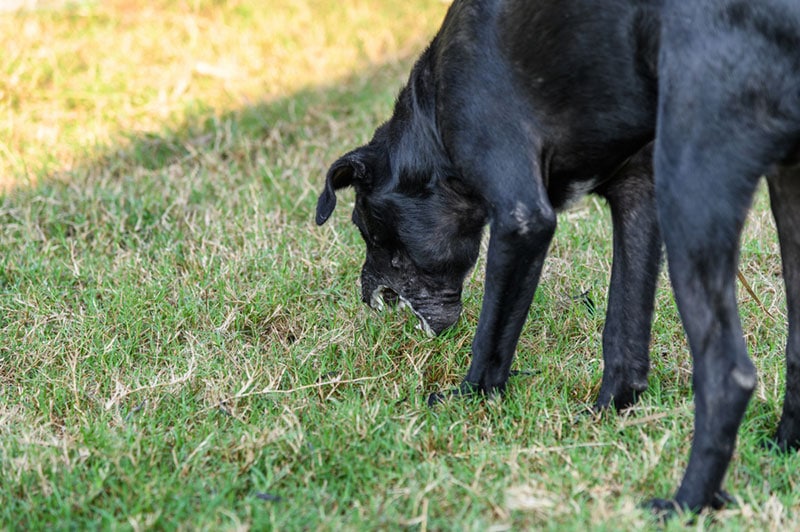
What If Multiple Hours Have Passed?
In the event that your dog ate a sock hours ago, or you’ve been at work all day and came home to find a sock missing, we recommend calling your veterinarian. Likely they will recommend a radiograph to see if the sock(s) are still in the stomach. Unfortunately, if the sock is no longer in the stomach, making your dog vomit will not be effective. Once the sock is within the intestines, it will not come back up with the medication discussed above.
If you need to speak with a vet right now but can’t get to one, head over to JustAnswer. It’s an online service where you can talk to a vet in real time and get the personalized advice you need for your pet — all at an affordable price!
What If Vomiting Does Not Occur?
What happens if the sock does not come up in the vomit, and/or it has already passed through the stomach into the intestines? If either of these occur, there are two possible outcomes. First, the sock will pass through the intestinal tract and your dog will defecate it out. If this occurs, it’s not unusual that your dog will have mild diarrhea before and/or after passing the sock. The diarrhea should self-resolve and your dog will go back to acting normal once the sock has passed.
The other possibility is that the sock becomes stuck somewhere in the intestinal tract. If this occurs, surgery is needed to remove it. Once an object becomes stuck in the intestines, it will put pressure on the intestine in that area, and over time this portion of intestine can break open. If this occurs, your dog will become extremely sick and will eventually pass away. This is why it’s important to get the sock out before it has the chance to become stuck.
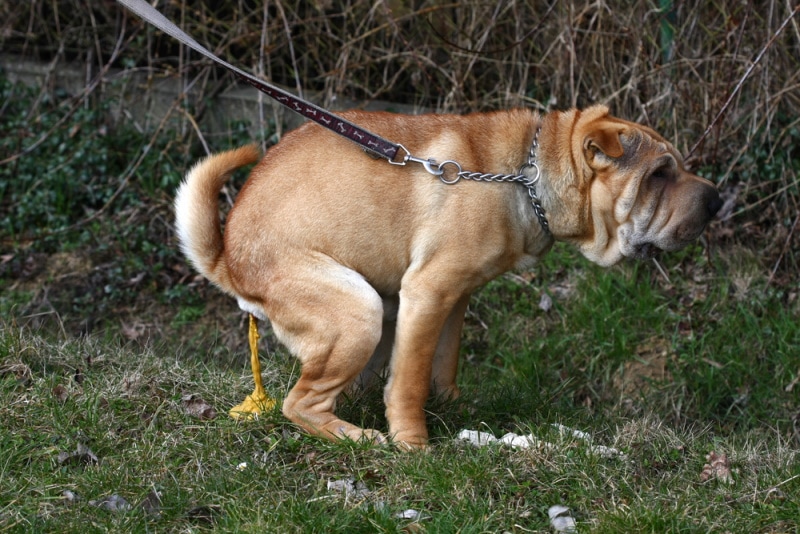
Conclusion
While eating a sock seems weird, many dogs love them and will ingest multiple at a time. Always keep track of them around the house, especially if you have kids, so they do not become a tasty snack for your dog. If you suspect, or know, that your dog ate a sock, the best thing to do is call your veterinarian and get them seen as soon as possible. Oftentimes the veterinarian will have an injectable medication that they can give to make them vomit, and the sock will come up in the vomit. If it’s been multiple hours since the event happened, a radiograph can help your veterinarian determine if the sock is still in the stomach or not. Unfortunately, if the sock passes into the intestines, you will have to wait for your dog to defecate it out or take them to surgery to remove it. If multiple days have passed without your dog going to the bathroom and/or passing the sock, surgery would likely be required.
See Also:
- My Dog Ate Rat Poison! – Here’s What to Do (Our Vet Answers)
- Why Does My Dog Steal My Socks? 5 Reasons and How to Stop It
- My Dog Ate an Ant Trap! – Here’s What to Do (Our Vet Answers)
Featured Image Credit: Zachary Pennington, Shutterstock




